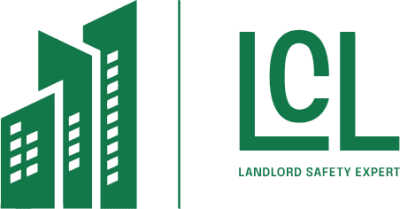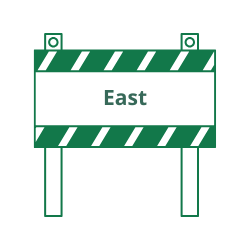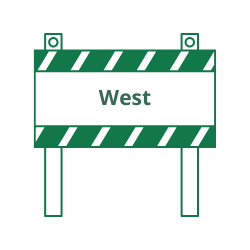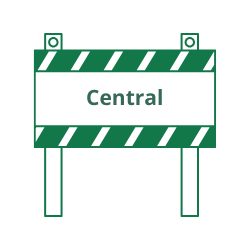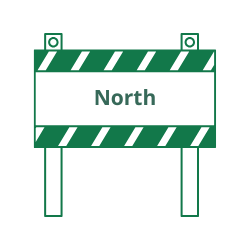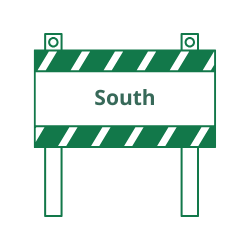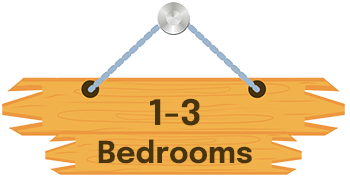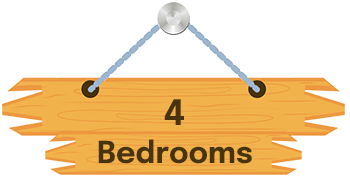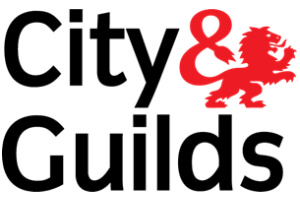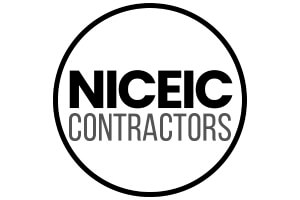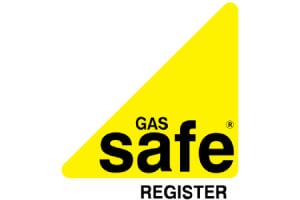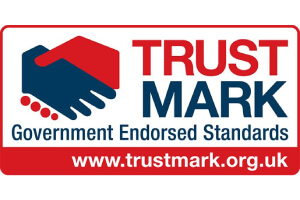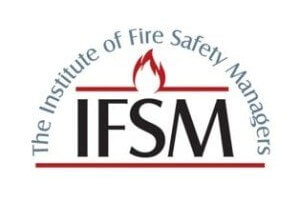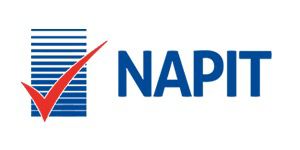EICR Studio Bedroom £67.991-3 Bedrooms £94.994 Bedrooms £104.995 Bedrooms £139.99
EICR Studio Bedroom £67.991-3 Bedrooms £94.994 Bedrooms £104.995 Bedrooms £139.99

EICR Residential
Start from £67.99
All inclusive (No hidden Cost)
Uncovering Hidden Electrical Hazards: The Importance of an EICR Inspection
EICR Test
Are you aware that a shocking 19,300 of all electrical fires in the UK occur each year in homes and that most of these could have been prevented with proper electrical maintenance and inspection?
As a property owner in London, you must take the necessary steps to ensure the electrical systems in your home or building are up to code and safe for use.
An Electrical Installation Condition Report (EICR) inspection is an essential step in this process.
These expert inspections ensure compliance with current regulations and uncover any potential hazards or issues before they become a problem.
Don’t wait for an electrical emergency to happen. Schedule your Residential EICR inspection today!
*£5 Parking Charges are applicable in case of paid parking.
*£15 Congestion Charge applicable in case the property is in congestion charge zone
If you have More than 5 Bedrooms you can make your booking by clicking on the button below:
Geographical Breakdown of London’s Districts
*£5 Parking Charges are applicable in case of paid parking.
*£15 Congestion Charge applicable in case the property is in congestion charge zone
What Is An EICR?
An Electrical Installation Condition Report (EICR), more commonly referred to as an EICR Inspection, it is designed to provide a thorough assessment of the condition of electrical installations. This report provides invaluable information to ensure that electrical installation is safe and compliant with current regulations. Since it’s so important, one must understand how long such a certificate lasts before needing another round of testing. An EICR, is a comprehensive inspection and testing of the electrical installation in a building, carried out every 5 years or before the expiry of existing EICR report.
It is designed to ensure that the electrical system is safe, compliant with regulations, and in good working order. In the UK, electrical safety is of utmost importance. To guarantee that all relevant regulations are met, and your building’s occupants stay safe, an EICR Inspection must be conducted by certified electricians. After completion of a successful EICR Inspection, you can trust that your electrical system is compliant with set standards and secure! EICR inspections are mandated for all electrical systems in the United Kingdom, both residential and commercial. The frequency of testing varies depending on the property type, however it is highly advised that tests be done at least every five years or sooner.
A study shows that electrical fires are a leading cause of house fires in the UK, with faulty electrics contributing to over 8,000 fires annually. This highlights the importance of regular inspections to ensure the safety of a building’s inhabitants by commissioning an Electrical Inspection, a property owner can receive an EICR certificate, which acts as a record of the condition of the electrical installation at the time of the inspection. To securely and confidently keep your home or workspace free from electrical hazards, it is essential to have an EICR inspection done. This process enables a certified electrician to detect any potential issues and fix them promptly for all regulations to be adhered to. By taking this critical step, you can guarantee the safety of everyone residing or operating within the premises; allowing for peace of mind without risk factors such as accidents, injuries, and fires caused by faulty electricity.
What Is An EICR Certificate?
An EICR certificate is a document that shows the results of the EICR inspection. The certificate will outline any defects that were found, their severity, and provide recommendations on how to rectify them. An EICR certificate is required for all commercial and rented residential properties in the UK, and it is usually valid for a period of five years. The certificate is an essential document that proves that the electrical installation has been inspected and tested, and that it meets the required safety standards.
What Is The EICR Certificate Cost?
The cost of obtaining an EICR certificate will depend on several factors, including the size of the property and the complexity of the electrical installation. On average, the cost of an EICR certificate can range from £100 to £300. It is important to note that the cost of an EICR certificate is a small price to pay for the safety of your property and the people who use it. In addition, obtaining an EICR certificate can help to identify potential electrical faults that could result in more costly repairs down the line. If you are looking for the cheapest and qualitative EICR assessment now, we provide cheapest EICR certificate in London.
What Does an EICR Do?
EICRs serve various purposes and are critical to the safety of any building. As such, they are important to any property’s maintenance plan.
So, what does an EICR do? Here are the five main purposes
- Check for any damage or breakdown in the system: An EICR check is designed to identify any potential problems in the system. This includes checking for any physical damage or faults and any signs of corrosion or deterioration.
- Identify any non-compliances or safety risks: An electrician or engineer will look for any non-compliances or safety risks. This could include any wiring or connections that haven’t been properly installed or components that aren’t up to standard.
- Identify any potential hazards: An engineer will identify any potential hazards that could result from a breakdown or failure of the system. This includes anything from a fire hazard to an electrical shock hazard.
- Identify any energy efficiency improvements: An EICR will identify any energy efficiency improvements that can be made to the system. This could include upgrading components or installing more efficient lighting.
- Provide a comprehensive report: An EICR will provide a comprehensive report on the system’s condition. This report can help inform decisions on how to maintain the system best and make necessary repairs or upgrades.
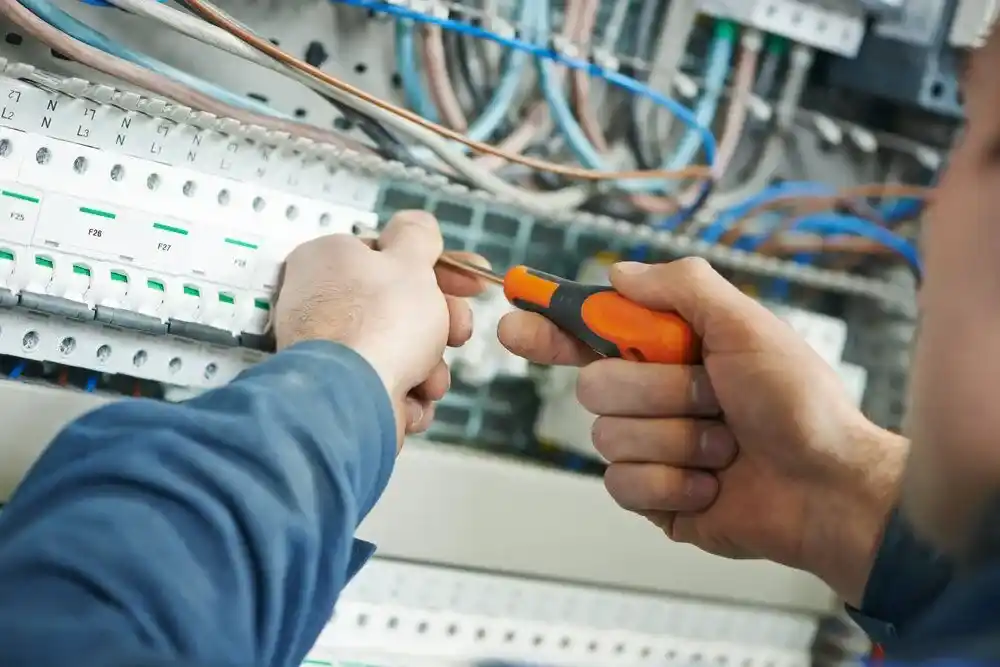
How Old is My Electrical Installation?
What Happens When I Don’t Have My Electrical System Tested Out?
If you are a landlord, you must regularly have your electrical system tested. This is not only for your tenants’ safety but for your own. You could face severe repercussions if you don’t have your electrical system tested out.
Firstly, you could be charged for non-compliance with the Electrical Safety Standards required by your local authority. Depending on the severity of the breach, you could be liable for up to £30,000 worth of penalties.
In addition, you are likely to forfeit cover for damages from your insurer.
If your property suffered an electrical fault due to a lack of maintenance, your insurer is unlikely to cover repair and replacement costs.
Without electrical testing for landlords, you are also putting your tenants at risk.
Electrical faults can cause fires, shocks, and other hazards that could have serious consequences. Therefore, you must have your electrical system tested out every 5 years.

How Is an EICR Carried Out?
- The inspection and testing are conducted by a qualified NICEIC or NAPIT electrician, who will use specialised equipment and techniques to check the condition of the wiring, circuits, and other components.
- The electrician will also check that the installation meets current safety standards and regulations.
- The electrician will thoroughly examine the electrical installation, test the wiring and circuits, check the safety devices, and inspect the condition of the installation.
- Any issues identified during the inspection will be noted, and recommendations for repairs or upgrades will be made.
- The electrician will then provide a detailed report of the inspection, including any issues found and recommendations for any repairs or upgrades.
What is tested During an EICR Inspection?
To identify any possible danger regarding electrical systems. The Domestic EICR Inspection starts with a visual inspection which is a testing procedure that qualified electricians use. It involves them carefully looking through the wiring and components to spot potential damage or wear due to age. In the EICR inspection we will check for wire loosening as well as equipment overloads which don’t have proper earthing measures in place. By running this test, it can help you protect your property from dangerous hazards connected with electricity!
The electrician will scour the wiring system for any signs of burning, arcing or corrosion that could be a result of an electrical fault. If discovered, it is up to them to provide advice on how best to rectify these issues and ensure safety in its operation.
Secondly, The dead test, an EICR Inspection procedure specifically designed to check the continuity of electrical circuits and insulation between two points, requires all live parts and earthed components be isolated in order for it to occur. This can then be tested by applying a low voltage across various areas of the circuit using specialized instruments that are created with safety being their primary concern. The results obtained from these tests will provide valuable insight into any potential problems or faults within your electrical system.
Engaging in dead tests as part of EICR test procedures can help protect people and equipment by verifying continuity or insulation resistance between two points. This essential process helps ensure the safety of those involved and any gear being used.
The third stage of the EICR test procedure is Live Testing – a process that examines the electrical system while still connected to its mains power source. Here, measurements such as voltage levels, earth loop impedances and prospective short circuit current tests are all taken into consideration. Additionally, it’s during this phase that an engineer will also assess any potential electric shock risk and ensure each circuit possesses adequate protection measures in place. All readings must remain within normal parameters or else they could point towards an issue with your electrical system.
The EICR Inspection Procedure is essential to guarantee an electrical installation’s safety, efficacy and regulatory compliance. Through the process a qualified engineer will review all their findings in order to certify that everything meets regulations. Should any irregularities be discovered during the testing phase, it is important they are promptly resolved before further damage can occur.
Adhering to the stages of this inspection procedure will guarantee a superior electrical installation and uphold the highest standards.
Furthermore, RCD (residual current device) testing is of utmost importance during an EICR to guarantee electrical safety and EICR compliance. These devices protect individuals from electric shocks by immediately disconnecting a power source in the event of any hazardous currents running through it. To ensure that each RCD works efficiently, its sensitivity is tested with precision to determine if protection standards are met.
Moreover, after the new amendments to BS7671:2018, all new installation should have SPD (surge protection device) protected consumer unit, as section 443.4.1, so all properties having a SPD consumer unit, SPD (Surge Protective Device) is tested as part of the electrical safety test. Surge protection devices safeguard the electrical setup, including the consumer unit, wiring and accessories from dangerous power surges known as transient over voltages.
During the EICR Inspection we perform an earthing and bonding test to guarantee that your electrical system is running with optimal safety. This process involves using specialized instruments, such as measuring the resistance, current carrying capacity and continuity of the earth system. After a thorough examination of these results, any discrepancies can be quickly identified for corrective action to address potential shocks or fires resulting from poor connections in the grounding network.
EICR Fixed Wire Testing Fixed wire testing is one of the tests that is carried out during an EICR. This test ensures that the electrical installations in your property are safe and compliant with current regulations.
Lastly, in an EICR Inspection switches, sockets and fuses are essential components to ensure electrical systems remain safe. Through EICR Inspection these switches, fused switches and socket-outlets can be checked for wear, tear or defects that may threaten electric shock or fire. To effectively guarantee safety standards in your system it is paramount to adhere to the relevant electrical regulations when inspecting these devices. When conducting an EICR Inspection, all switches, fused switches and socket-outlets are tested for functionality and integrity. Make sure to check if the switches are functioning properly as well as tightening up any lose outlets for damage or corrosion. We also check that fuse ratings meet current regulations too!
How Long Does An EICR Last?
An EICR Report or Certificate is valid for five years from the date of issuance. However, depending on the type and function of your installation, this timeframe may vary. Moreover, it’s recommended that an updated assessment be conducted as soon as any alterations have been made to either your building or its components.
Keeping up with accurate records of the last Electrical Installation Condition Report (EICR) is key for ensuring a safe and compliant electrical system. Moreover, it’s essential to note any repairs or modifications made on the report – meaning regular inspections are absolutely necessary! With vigilant record-keeping and frequent checkups you can guarantee your wiring remains within code requirements in the years ahead!
What Happens After I Receive My EICR?
Upon receiving a satisfactory or pass EICR certificate, it is essential to share the document with all pertinent parties. This includes any owners of the property, landlords, tenants and anyone living in the building – as well as any local authority which requested for a copy after completion of the report.
It is critically important to safeguard your Electrical Installation Condition Report (EICR) certificate in a safe place for potential references. Regular EICRs are essential, as they can protect you from electrical fires and other dangers. Moreover, it’s prudent to review the report from time-to-time; this way any necessary corrective actions could be taken promptly thus ensuring safety for all involved.
How Much Does An EICR Cost?
Price for EICR The price for an EICR can vary depending on the size and complexity of your property, as well as the number of circuits that need to be tested. Planning to get an EICR Test for your home? The size of your property is a significant factor in determining the cost. Understandably, bigger homes tend to have more components that require inspection— outlets, circuits and appliances. A landlord electrical safety certificate or an EICR cost could range from around £100 to £300, depending on the multiple factors.
What Are the Factors that affect An EICR Cost?
The estimate listed can vary as, other components may play a role in raising or lowering your final price. Considering the size of your home could be one such factor that affects EICR price.
Dimensions of the property
The size of your abode directly correlates with the number of devices, outlets and circuits that must be evaluated. Consequently, this necessitates a more extensive investigation effort hence affecting the EICR cost.
Intricate nature of the electrical system
On the whole, inspecting complex wiring or dealing with large properties for an EICR Inspection can come at a higher cost than simpler and smaller setups.
The overall age and state of the equipment
The price of an EICR Test is subject to the age and state-of-repair of your equipment. Elderly machinery may necessitate added analysis, repairs or replacements which can considerably add up on your bill. Considering this cost gap could be quite considerable, it’s definitely worth investing in regular checks on older appliances!
The qualifications of the engineer conducting the test
An engineer with a higher level of experience and expertise may be more expensive but will often provide an in-depth EICR report on the condition of the electrics that could save you money in the long run. It is important to choose an experienced and qualified engineer when considering EICR cost, as they can accurately assess potential risks within the electrical system.
Geographical Variations
Given the tendency of trade prices and cost of living to be higher in London compared to other parts of Britain, you can expect an EICR inspection to come at a steeper price than usual
What Happens If I Don’t Get An EICR Inspection For My Property?
In the UK, it is an absolute necessity for property owners and landlords to guarantee that their electrical systems are safe and updated. An EICR Inspection can be used as a tool of assurance in knowing that safety policies are being observed while also providing one with comfort in understanding that their electrical devices adhere to modern standards.
Not only can an EICR residential Inspection protect you and your family against potential risks posed by faulty wiring or electrical systems, but it is also essential for any property owners and landlords. Therefore, obtaining an EICR Test Certificate in the UK should be a priority and it can only be obtained after a successful EICR Inspection.
Failing to undertake an EICR inspection before renting out your property is a serious offence in the UK. Not only could you face criminal prosecution for breaching electrical safety regulations, but you could also be putting your tenants at risk of injury or even death if an electrical fault goes undetected. In these circumstances, any compensation claims made against you would be significantly higher.
Moreover, your insurance policy may not be valid if you have not taken the necessary precautions. It is, therefore, strongly recommended that any landlord obtain an EICR inspection prior to renting out their property. Not doing so could have disastrous consequences. Therefore, it is essential for landlords to ensure they get an EICR inspection before letting a property in order to avoid legal and financial implications, as well as ensuring the safety of their tenants. The EICR inspection is a legal requirement and should never be overlooked.
As a responsible landlord, ensuring the safety and compliance of your rental property is paramount. One crucial aspect of this is conducting Electrical Installation Condition Report (EICR) checks. In this comprehensive guide, we’ll delve into EICR checks, the Electrical Installation Condition Report certificate, and how they contribute to the safety of your property and compliance with regulations.
EICR Checks: A Vital Safety Measure
EICR checks, or Electrical Installation Condition Report checks, are comprehensive inspections of your property’s electrical systems. These checks are essential to identify any potential hazards or non-compliance issues, ensuring the safety of your tenants and protecting your investment.
The Electrical Installation Condition Report Certificate for Landlords
For landlords, the Electrical Installation Condition Report certificate is a critical document. This certificate confirms that the electrical installation in your property has undergone a thorough inspection and has been deemed safe and compliant with electrical regulations. It is a legally required document in many jurisdictions and must be updated regularly.
Understanding the EICR Landlord Obligation
EICR checks are not just a best practice; they are often a legal requirement for landlords. The EICR landlord obligation ensures that rental properties meet specific electrical safety standards. Failure to comply with these obligations can result in penalties and put the safety of your tenants at risk.
Electrical Testing for Landlords: The EICR Certificate
The EICR certificate, also known as the Landlord Electrical Safety Certificate, is the outcome of an EICR check. It outlines the findings of the inspection and details any remedial work required. This certificate serves as evidence that you have fulfilled your legal obligations and ensures that your property is electrically safe for your tenants.
The Importance of EICR Testing
EICR testing is not only about meeting legal requirements but also about prioritizing the safety and well-being of your tenants. Faulty electrical systems can pose significant risks, such as electrical fires or electric shock, making regular EICR testing a fundamental practice for responsible landlords.
Understanding the EICR Report
The EICR report is a comprehensive document generated after an inspection. It details the condition of the electrical installation, identifies any faults or potential issues, and offers recommendations for remedial work. Landlords should pay close attention to the EICR report, as it guides them on essential maintenance and improvements.
The Role of EICR in Landlord Compliance
To maintain compliance with electrical safety regulations, landlords must regularly conduct EICR checks. The Landlord Electrical Safety Certificate, derived from the EICR, proves that your property adheres to safety standards. It’s essential to be proactive in scheduling these inspections to avoid legal repercussions and to safeguard your tenants.
Conclusion
In summary, EICR checks, the Electrical Installation Condition Report certificate, and associated terminology like EICR landlord, EICR certificate, and EICR testing are critical components of a landlord’s responsibility. Regular electrical testing for landlords ensures the safety and well-being of tenants, compliance with legal obligations, and the protection of your property investment.
Make EICR checks a priority in your property management strategy, as they are essential for maintaining a safe and compliant rental environment. Remember, it’s not just about meeting the EICR landlord obligation; it’s about creating a secure and inviting space for your tenants.
How Do I Ensure a Smooth EICR Inspection?
Hiring an Expert Electrician
The first step to ensuring a successful EICR inspection is to hire a qualified electrician or engineer.
Not all electricians are the same, so it’s essential to do your research and hire someone certified and experienced in performing EICR inspections.
This will give you confidence that the inspector can accurately assess the property’s condition and issue an EICR Report.
Reading Up on Relevant Regulations
Another important step is to read up on relevant regulations and standards before an EICR.
As a landlord, you should be familiar with the appropriate rules and standards for your property, such as Electrical Safety, Quality, and Continuity Regulations.
Familiarising yourself with the regulations will help you identify any potential issues in advance and ensure that your property meets all the relevant requirements before the EICR is conducted.
Preliminary Inspection
Once you have hired a qualified electrician, it’s a good idea to conduct a preliminary inspection of your property.
This will allow you to identify any potential issues in advance and give you an idea of the extent of the EICR inspection that will be required.
Expert Advice
When any issues are found during the EICR inspection, your electrician should advise you on how to remedy them.
This could include replacing faulty wiring or electrical components or issuing an Electrical Installation Certificate (EIC) if the wiring is not compliant with current regulations.
Let your Tenants Know
Once the EICR inspection is booked, it’s essential to inform your tenants beforehand.
This will allow them to ask any questions they may have and also prepare them for any disruption that the inspection may cause.
Mutual Clearance
It’s vital to clarify the extent of the EICR inspection with your electrician. This will ensure that you are both clear on the scope of the EICR assessment and that you are aware of any additional fees that may be applicable.
As a responsible landlord, your tenants’ safety and the compliance of your rental property with electrical safety standards are top priorities. One essential aspect of ensuring this safety and compliance is the Electrical Installation Condition Report (EICR). In this comprehensive guide, we’ll explore EICR checks, the Electrical Installation Condition Report certificate, and their significance for landlords.
EICR Checks: A Necessity for Landlords
EICR checks, short for Electrical Installation Condition Report checks, are thorough examinations of the electrical systems within your rental property. These checks are vital for identifying potential hazards or non-compliance issues, ensuring the safety of your tenants and your adherence to electrical safety regulations.
The Electrical Installation Condition Report Certificate for Landlords
For landlords, the Electrical Installation Condition Report certificate is a critical document. It certifies that your property’s electrical installation has undergone a detailed inspection and has been determined to be safe and in compliance with the relevant regulations. This certificate is often legally required and should be kept up to date.
Understanding the EICR Landlord Obligation
EICR checks are more than just a best practice; they are frequently a legal obligation for landlords. The EICR landlord obligation is in place to ensure that rental properties meet specific electrical safety standards. Failing to fulfill these obligations can lead to legal penalties and, more importantly, compromise the safety of your tenants.
Electrical Testing for Landlords: The EICR Certificate
The EICR certificate, also known as the Landlord Electrical Safety Certificate, is the outcome of an EICR check. It summarizes the inspection’s findings, including any necessary remedial work. This certificate serves as concrete proof that you have met your legal obligations and that your property’s electrical systems are safe for your tenants.
The Vital Role of EICR Testing
EICR testing isn’t just about meeting legal requirements; it’s about prioritizing the safety and well-being of your tenants. Faulty electrical systems can pose significant risks, such as electrical fires or electric shocks. Regular EICR testing is a fundamental practice for landlords committed to their tenants’ safety.
Decoding the EICR Report
The EICR report is a comprehensive document produced after an inspection. It outlines the condition of the electrical installation, identifies any faults or potential issues, and provides recommendations for remedial work. As a landlord, paying close attention to the EICR report is crucial, as it guides you on essential maintenance and improvements.
EICR in Landlord Compliance
To maintain compliance with electrical safety regulations, landlords must routinely carry out EICR checks. The Landlord Electrical Safety Certificate, derived from the EICR, serves as evidence that your property conforms to safety standards. Being proactive in scheduling these inspections is essential to avoid legal consequences and protect your tenants.
Conclusion
In summary, EICR checks, the Electrical Installation Condition Report certificate, and related terms like EICR landlord, EICR certificate, and EICR testing are integral components of a landlord’s responsibilities. Regular electrical testing for landlords is vital for ensuring tenant safety, adhering to legal obligations, and safeguarding your property investment.
Prioritize EICR checks in your property management strategy, as they are essential for maintaining a safe and compliant rental environment. Remember, it’s not only about meeting the EICR landlord obligation; it’s about creating a secure and welcoming space for your tenants.
Frequently asked questions.
*£5 Parking Charges are applicable in case of paid parking.
*£15 Congestion Charge applicable in case the property is in congestion charge zone
*£5 Parking Charges are applicable in case of paid parking.
*£15 Congestion Charge applicable in case the property is in congestion charge zone
